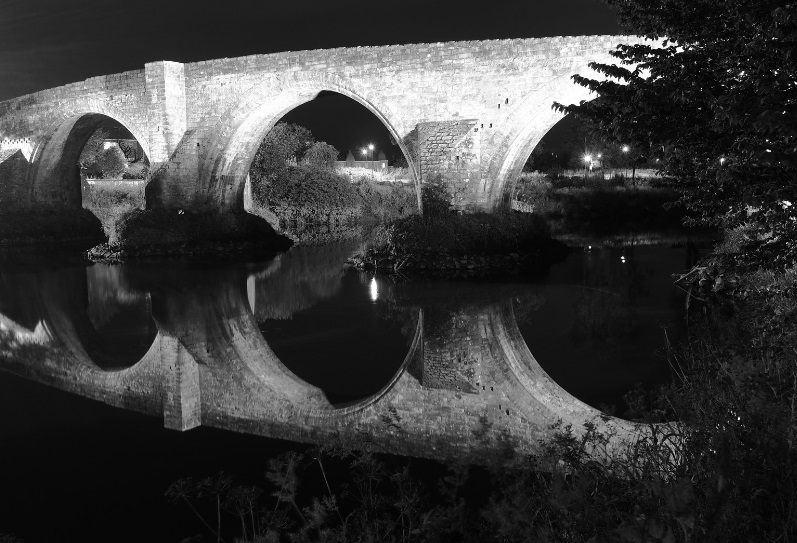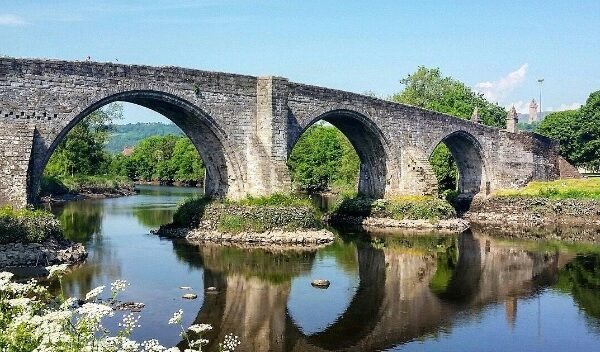Stirling Bridge
The Battle of Stirling Bridge, fought on 11 September 1297, stands as one of the most important and symbolic conflicts in Scottish history. It was a defining moment in the Wars of Scottish Independence, where a relatively small Scottish force led by William Wallace and Andrew Moray achieved a stunning victory over the much larger and better-equipped English army. This battle not only demonstrated the strategic genius of Scottish commanders but also ignited a sense of national pride and resistance that would continue for generations.
Historical Context
By the late 13th century, Scotland was in a state of political upheaval. After the death of King Alexander III in 1286 and the subsequent death of his heir, Margaret, Maid of Norway, in 1290, Scotland was left without a clear ruler. King Edward I of England seized this opportunity to assert control over Scotland, initially acting as an arbiter in the succession crisis. However, his intentions quickly turned imperialistic.
Edward’s heavy-handed rule, including the installation of English officials and garrisons throughout Scotland, led to widespread unrest. In 1296, he invaded Scotland, capturing several key locations and forcing Scottish nobles to swear allegiance to him. Resistance soon began to stir, and by 1297, two major leaders emerged at the forefront of the rebellion: William Wallace, a minor nobleman with a growing reputation, and Andrew Moray, a young noble from the north of Scotland.

The Battle Unfolds
The English army, led by John de Warenne, the Earl of Surrey, and Hugh de Cressingham, Edward I’s treasurer in Scotland, advanced toward Stirling with around 9,000 soldiers, including cavalry, infantry, and archers. In contrast, Wallace and Moray commanded an estimated 6,000 Scots, mostly spearmen and lightly armed foot soldiers.
The battlefield centered on a narrow wooden bridge crossing the River Forth near Stirling. The English planned to use this bridge to cross into Scottish-held territory. Despite being advised to delay the crossing until more secure ground could be established, the English commanders—particularly Cressingham—underestimated the Scots and pressed ahead.
Wallace and Moray recognized the tactical importance of the narrow bridge. They waited until about half of the English forces had crossed before launching their attack. The bottleneck created by the bridge meant that only a limited number of English troops could cross at any given time. Once the Scots struck, they quickly overwhelmed the English vanguard on the north side of the river. Trapped and unable to retreat or receive reinforcements, many English soldiers were killed or driven into the river to drown.
In the chaos, the bridge collapsed—either from damage during the battle or as part of a deliberate tactic. The remaining English forces were unable to regroup, and many were slaughtered or fled. Hugh de Cressingham was killed and famously flayed by the Scots, allegedly for his cruelty and greed. John de Warenne escaped but was forced to retreat south, leaving Scotland temporarily in the hands of the rebels.
Aftermath and Significance
The victory at Stirling Bridge was a massive morale boost for the Scottish resistance. It demonstrated that a disciplined, strategically positioned Scottish force could defeat the might of the English army. Wallace and Moray became national heroes, although Moray was mortally wounded during the battle and died shortly afterward.
Following the battle, Wallace was appointed Guardian of Scotland in the name of the deposed King John Balliol. However, his tenure was short-lived; he suffered a major defeat at the Battle of Falkirk in 1298 and eventually went into hiding. In 1305, Wallace was captured, executed in London, and later remembered as a martyr and symbol of Scottish freedom.
Despite Wallace’s downfall, the Battle of Stirling Bridge had long-lasting consequences. It inspired future generations of Scots to continue the fight for independence, culminating in the Battle of Bannockburn in 1314, where Robert the Bruce secured a decisive victory. The early success at Stirling laid the groundwork for Scotland’s continued resistance against English domination.
The Bridge Today and Historical Legacy
The original Stirling Bridge no longer exists, but a 15th-century stone bridge now spans the River Forth near the battle site. The area has become a key location for historical tourism and national remembrance. Nearby stands the Wallace Monument, a towering tribute to William Wallace’s legacy as a patriot and military leader.
The battle has been immortalized in literature, film, and folklore. While some depictions, such as in the movie Braveheart, take creative liberties, the essence of Wallace’s courage and strategic brilliance continues to resonate with Scots and historians alike.
Conclusion
The Battle of Stirling Bridge was far more than a military engagement—it was a symbol of defiance against tyranny and a testament to the power of strategic leadership. Against overwhelming odds, Wallace and Moray showed that courage, unity, and tactical awareness could turn the tide of history. Their triumph at Stirling Bridge remains a cornerstone of Scottish identity and a proud chapter in the nation’s long and often turbulent journey toward sovereignty.

